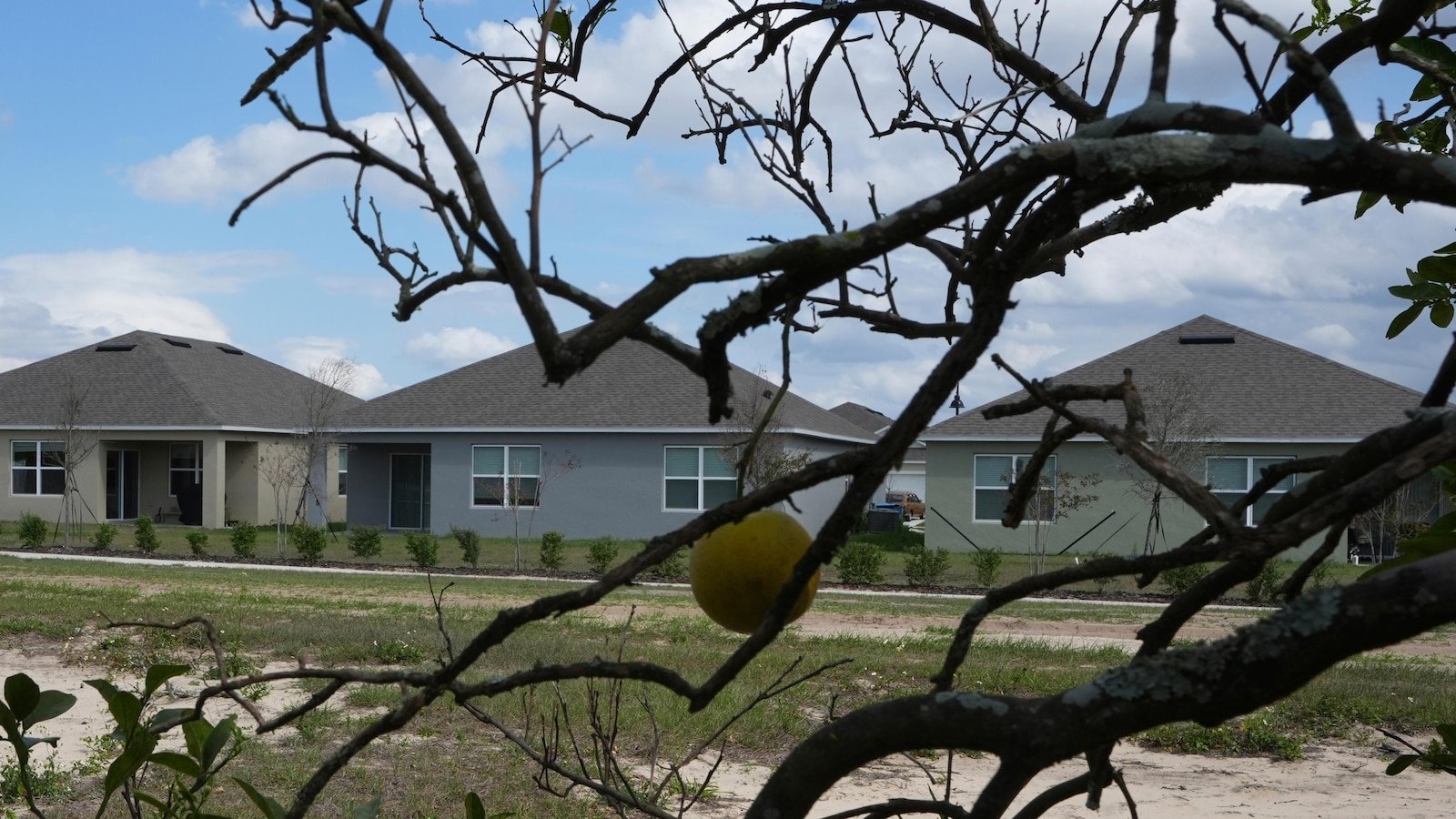Lake Wales, Florida – While Trevor Murphy arrives at the Arboleda of 20 Acres (8 hectares) of his father in one of the fastest growing counties in the United States, he points out the houses of a cookie floor that invade the oranges on all sides.
“At some point, this will no longer be an orange forest,” says Murphy, a third generation producer, while looking at the rows of trees in Lake Wales, Florida. “You look here, and all the houses, and that will happen here.”
Polk County, which includes Lake Wales, contains more citrus acres than any other Florida county. And in 2023, More people moved to Polk County than any other county in the country.
Hit in recent years by hurricanes and Green citrus diseaseThat slowly kills trees, many producers are making the difficult decision to sell orange forests that have been in their families for generations for developers who build homes to house the growing population.
Others, such as Murphy, are taking it out, hoping to survive until a tree free of insects or other options to repel the disease or treat trees.
When Hurricane Irma crossed The Orange State Belt In 2017, Florida’s exclusive harvest had already been in a descending spiral for two decades due to greeninous disease. Then came A great freezing and Two more hurricanes In 2022, followed by Two hurricanes last year. A tree that loses branches and foliage in a hurricane can take three years to recover, Murphy said.
These catastrophes contributed to a 90% decrease in orange production in the last two decades. Citrus Groves in Florida, which covered More than 832.00 acres (336,698 hectares) At the beginning of the century, only 275,000 acres (111,288 hectares) last year last year, and California has eclipsed Florida as the main nation of the nation Citrus producer.
“Losing the citrus industry is not an option. This industry is … so entrenched in Florida. Citrus is synonymous with Florida, ”said Matt Joyner, CEO of the Trade Florida Citrus Mutual Association to Florida legislators.
However, Alico Inc.One of Florida’s largest producers, announced this year that it plans to reduce its citrus operations by more than 53,000 acres (21,000 hectares), saying that its production has decreased by almost three quarters in a decade.
This decision harms the processors, including Tropicana, which depends on Alico’s fruit to produce orange juice and must now operate to a reduced capacity. The consumption of orange juice in the United States has decreased during the last two decades, despite a small lump during the COVID-19 pandemic.
An outstanding group of producers, the Gulf Citrus Producers Association, closed its doors last year.
The pressure on citrus agriculture is also growing from one of the other largest industries in the state: real estate.
Florida expanded by more than 467,000 people last year to 23 million people, which makes it the third largest state in the nation. And more houses must be built to house that growing population.
Some prominent multigenerational citrus families have been placing hundreds of acres (hectares) of forests for sale for millions of dollars, or up to $ 25,000 per acre.
Murphy has several hundred acres (hectares) of Groves and says that he has no plans to leave the industry, although last year he closed a citrus care business that managed thousands of acres for other owners.
However, it also has a real estate license, which is useful given the amount of land that is changing hands. Recently he sold Acres in Polk County to a domestic developer, and has used that money to pay the debt and develop plans to replant thousands of trees in more productive forests.
“I would like to think that we are at the bottom, and we are starting to climb that hill,” says Murphy.
A complete ecosystem of companies that depend on the citrus of Florida is at risk if the crops fail, including 33,000 full -time jobs and part -time and an economic impact of $ 6.8 billion in Florida alone. In addition to the producers, there are juice processors, forest caregivers, fertilizer vendors, packaging houses, centers and manufacturers of sweets, all with the hope of a solution for citrus green disease.
Tom Davidson, whose parents founded Davidson from Dundee Citrus Candy and Jelly Factory in Lake Wales in 1966, says that the fall in citrus production has impacted what flavor is capable of producing the business and prices charged to customers.
“We really hope that scientists can solve this so we can be able to return to what we did,” says Davidson.
Researchers have been working for eight years in a genetically modified tree that can kill the small insects responsible for citrus. The process involves inserting a gene into a citrus tree that produces a protein that can kill the Asian citrus of the baby by making holes in its entrails, according to Lukasz Stelinski, professor of entomology at the University of Florida/Institute for Research and Education of Citrus of Agricultural Sciences and Agricultural Sciences.
They could pass at least three years before insect -resistant trees can be planted, leaving Florida producers looking for help from other technologies. They include planting trees inside protective screens and covering young trees with white bags to avoid insects, inject trees with an antibiotic and find trees that have become resistant to ultrasound through natural mutation and distributing them to other forests.
“It’s like being a fan of the lions before Detroit lions He started winning games, ”says Stelinski. “I hope we are making that change.”
___
Follow Mike Schneider on social platform X: @MIK ability.





